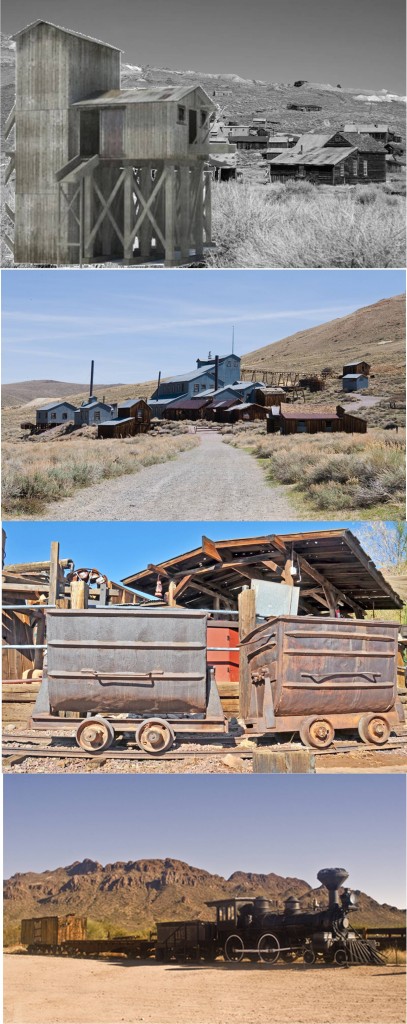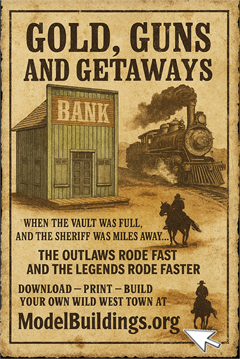Everything on model trains, model railroads, model railways, locomotives, model train layouts, scenery, wiring, DCC and more. Enjoy the world's best hobby... model railroading!
Wild West Mining Towns and Railroads – An Important Part Of American History
 Across the American West there are hundreds of long abandoned mining towns that were once bustling “boom towns” where men in the late 19th century went to seek their fortune. The towns were often lawless; but sometimes had a jailhouse, most likely a saloon or two, and plenty of rickety timber boardwalks. There were mining camps, boarding houses, stores, and offices set up to cope with the influx of prospectors. In some places, like Animas Forks in the Colorado Rockies, the prospectors would depart each Winter and return in the Spring when conditions were less extreme.
Across the American West there are hundreds of long abandoned mining towns that were once bustling “boom towns” where men in the late 19th century went to seek their fortune. The towns were often lawless; but sometimes had a jailhouse, most likely a saloon or two, and plenty of rickety timber boardwalks. There were mining camps, boarding houses, stores, and offices set up to cope with the influx of prospectors. In some places, like Animas Forks in the Colorado Rockies, the prospectors would depart each Winter and return in the Spring when conditions were less extreme.
One of the best-preserved “ghost towns” is Bannack in Montana. Another town worthy of mention is Calico in California. In the 1880’s it was a silver mining outpost, but in the 1950’s was purchased by Walter Knott who built a replica town on the family berry farm 10 years earlier. Just along the road from Disneyland, the town developed into an amusement park, to be known as Knott’s Berry Farm.
In the early 20th century (1907 and 1908) up to 5,000 men worked at the Montgomery Shoshone Gold Mine near Rhyolite, bordering Death Valley National Park. The boom town closed just 7 years after it was established and the mine closed down. The population was virtually zero by 1920.
Another town of note is Arizona’s Ruby Falls, a once hustle and bustle mining camp located near Mexican border in the Coronado National Forest about 70 miles southeast of Tucson. During the 1920’s the town was know for a string of double homicides. Ruby Falls prospered for several decades, but was abandoned in 1941. During the late 1960’s, it the town was inhabited by hippies.
The gold rush town of St. Elmo in Colorado was Founded as Forest City in 1880. However the last train left in 1922 taking most of the remaining inhabitants with it.
Unfortunately the inevitable boom and bust cycle was common to many western mining towns.
The one thing in common for all these mining towns is that they all had character and plenty of stories to tell. That’s why they make such interesting settings when replicated on a model railroad. After all, we all grew up watching Wild West movies that more often than not featured outlaws, saloons, railroads, and gold prospectors.
If you are interested in building a small mining or wild west town, there are two sets of downloadable plans available at http://www.modelbuildings.org/wild-west-scale-models.html and http://www.modelbuildings.org/mining-town-buildings.html















Leave a Reply